Back
OVERGLAZE ENAMEL
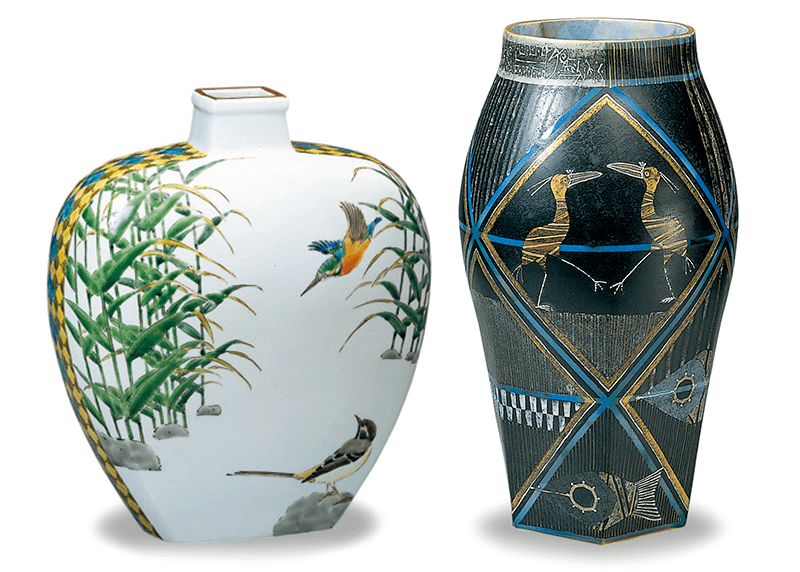
Description
Overglaze enamel decorations (iro-e, literally “colored pictures”) are achieved by applying designs to the surface of already glazed and fired porcelain. The decorations are painted over the glaze, and the piece is fired again at a low temperature of approximately 800℃. The pigments used in traditional overglaze decorations are known as wa enogu (“Japanese paints”) and offer a palette of colors such as red, blue, yellow, green, and purple. Overglaze enameling may also be done with Western pigments (yō enogu).
Wa enogu originated in China, and the color of the pigments change dramatically after firing. By contrast, Western pigments show very little change after firing, can be easily mixed together, and come in a wide variety of colors.
Process (traditional pigments)
-
 1.The process begins with a glazed and fired piece of white porcelain.
1.The process begins with a glazed and fired piece of white porcelain. -
 2.The outlines of the design are applied to the piece.
2.The outlines of the design are applied to the piece. -
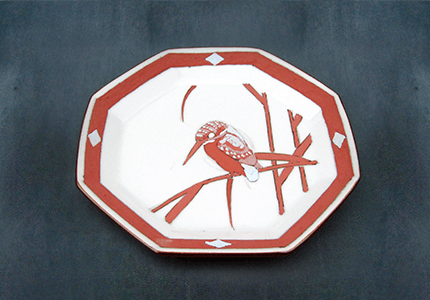 3.The outlines are filled in using traditional pigments of different chemical compositions.
3.The outlines are filled in using traditional pigments of different chemical compositions. -
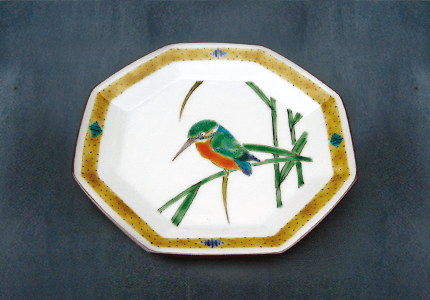 4.The piece is complete after firing at 800℃.
4.The piece is complete after firing at 800℃.
Process (Western pigments)
-
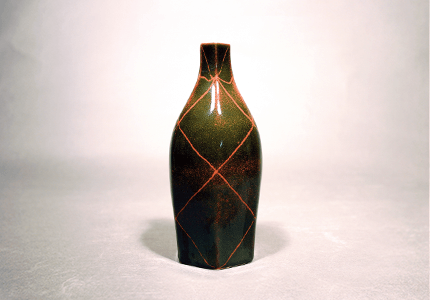 1.The process will be demonstrated on a glazed and fired piece of purple pottery.
1.The process will be demonstrated on a glazed and fired piece of purple pottery. -
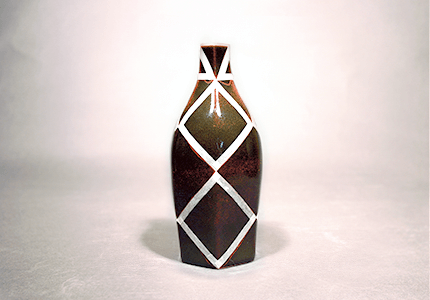 2.Masking tape is used to mark the areas that will be painted in different colors.
2.Masking tape is used to mark the areas that will be painted in different colors. -
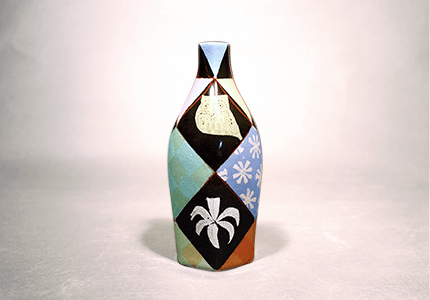 3.The designs are applied to the piece, the tape is removed, and the piece is fired.
3.The designs are applied to the piece, the tape is removed, and the piece is fired. -
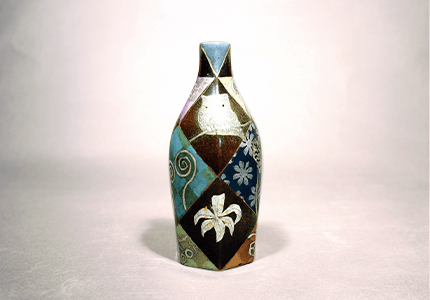 4.Gold and silver are applied, and the piece is complete after an additional firing.
4.Gold and silver are applied, and the piece is complete after an additional firing.
-
Reference: Nihon Kōgeikai Higashi Nihon Shibu (Japan Kōgei Association Eastern Branch), ed., Dentō kōgei-tte nani? – miru, shiru, tanoshimu gaido bukku (What Are Traditional Crafts? –A Guidebook to Seeing, Learning, and Enjoying). Unsodo, 2013.
